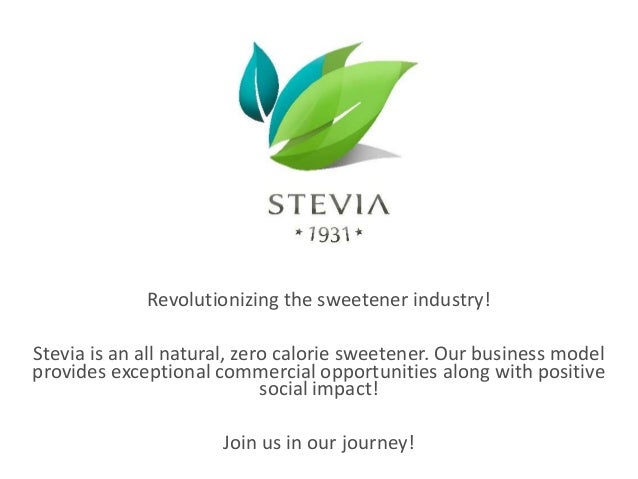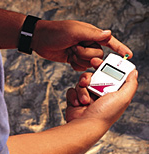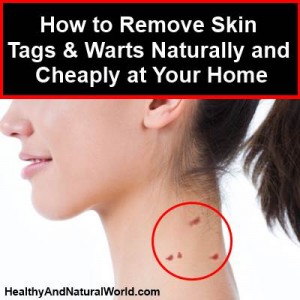
Transcript
1. Revolutionizing the Sweetener Industry! Stevia is an all natural and zero calorie sweetener. Our business model provides exceptional commercial opportunities along with positive social impact! Join us in our journey today!
2. Exelenti incubates prosperity for all by making use of Venture Philanthropy & Impact Investing tools. We are a cooperation as well as a foundation. Stevia 1931 is our key Impact Investing project. Scroll along to discover more about this unique opportunity.
3. We Will Discuss: What is Stevia? (p. 4) Stevia Timeline (p. 6) Status and Trends Sweetener Market (p. 8-11) Why Agriculture and Why Ghana? (p. 12-14) Stevia’s Position Within the Sweetener Market? (p. 13-18) The Business: Stevia 1931 B.V. (p. 19-23) Understandings and Agreements (p. 24-25). Partners & Team (p. 26-28). Experimenting with Multiple Stevia Strains in Greenhouses in The Netherlands
4. What is Stevia? Stevioside and rebaudioside are the glycosides that give stevia its sweet taste. 100% natural. Also once refined through our unique processing methodology. Biological certification from EUSTAS pending. Calory and carbohydrate free! Safe and no known side effects with moderate use. Stable to heat. Resistant up to 198 degrees Celsius. Up to 300 times sweeter then sugar. No negative side effects. Studies show it may have health benefits. Ideal for food processing industry for several reasons, especially in the syrup formula we produce. Structural Formula Stevioside
5. Breeding Facilities in The Netherlands
6. Stevia Timeline Native to Paraguay & Brazil; consumed since 1600. In 1931 two scientist isolated the glycosides that give stevia its sweet taste: Stevioside and Rebaudioside. This remarkable discovery is what led us to name our venture Stevia 1931. Japan was the first (1970) developed and westernised economy to embrace stevia as a sweetener. Today Stevia has over 50% market share within the commercial sweetener market in Japan. In 2008 the U.S. FDA approved stevia as a food additive and dietary supplement. France followed suit in 2009, Hong Kong in 2010 and Europe in 2011.
7. Testing Our Strain in Various Conditions and Locations – Aljezur, Algarve, Portugal
8. Satisfying our Sweet Tooth In the 17th century refined sugar was a luxury item and consumption was limited. In the 19th century consumption sky-rocketed. WHO advices 25 grams of sugar p.p. per day. Current use is estimated at ± 140 grams of sugar p.p. per day. Excess sugar intake is linked to obesity, type II diabetes, cancer, heart disease, high blood pressure, tooth decay and other diseases. We are genetically programmed to crave sugar. The food industry knows this. Below an evolutionary time line:
9. Stakeholders & Developments The sugar lobby is switching from fighting stevia towards embracing it. Hybrid products etc. Government subsidies for sugar production are set to be abolished (EU 2017). Consumers demand healthier alternatives. Resiliant sugar lobby long resisted approval of stevia in Europe. No checks & balances in the market. Afters years of stonewalling, stevia is permitted as a food adative and dietary suplement as of Dec. 2011 (EU). The ‘market’ and players within the sweetener industry are now playing catch-up Farmers, the food industry/sweetener market, goverernment and trade all have interest in the sweetener market. Stevia is a potential sugar & artificial sweetener substitute. Many new product developements. * Full SWOT analysis available in business plan.
10. Trends Consumer along with the food processing industry are becoming increasingly health conscious: Obesity, diabetes etc. are threatening and affecting our quality of life. The food industry is looking for a natural alternative to artificial sweeteners and sugar. The soda industry is currently taking the lead. Consumer demand for healthy ageing. Economic Motivations: Medical cost associated with over consumption of sugar are becoming overwhelming and unaffordable. Around 50% of EU population is overweight (220 million). Government: Government policy making is increasingly focused on using legislation to reduce sugars in food. Consider for example the sugar tax in Norway, Denmark, Mexico & St Helena. Trends in Philanthropy: Shift from giving to providing the key to self-reliance. New concepts and tools such as Venture Philanthropy and Imapct Investment on the rise.
11. Sugar Consumption at a Crossroad Credit Suisse concluded in their report: ‘Sugar Consumption at a Crossroad’ that sugar reduction is imminent and an undeniable trend. The report states; “The most likely outcome over the next 5-10 years will be a significant reduction in sugar consumption and a marked increase in the role played by high- intensity natural sweeteners in foods and beverages.’ The report continues by stating that ‘30%–40% of healthcare expenditures in the USA go to help address issues that are closely tied to the excess consumption of sugar.’ 'Sugar is the new tobacco': Cuts to amounts hidden in food could halt obesity epidemic, claim doctors
12. Why Agriculture? Key weapon in fighting poverty in Africa. Growing population with sweet tooth in developing world. Healthy returns, reasonable risk. Increasing demand for stevia.
13. Ghana: The Perfect Place for Stevia Cultivtion Good climate for growing stevia. Africa set to host the densest meteorological network in the world. Options for sites of 4000ha plus in Upper East Ghana inlc. Bulenga, Busa, Katua, Loggu en Tanina. Active participation from government on several levels, such as the Ministry for Agriculture, the Plant Protection and Regulatory Services (PPRSD) and Ghana Food and Drugs Authority (GFDA). Politically stable and well functioning banking industry. In top 10 of African Human Development Index. GDP long term average at 8% per annum; agriculture 5%.
14. Surveyor Sourcing Land in Upper West Ghana
15. Stevia is Set to Conquer 25-40% Market Share Within the Sweetener Market in EU (Pop. 520MM) Governments are keen to reduce the large cost associated with sugar overconsumption such as obesity. Subsidies for sugar cultivation are being reduced/abolished throughout the EU. Policy making such as sugar tax is now being implemented in various countries. Consumer are becoming increasingly aware of the negative effects of sugar over consumption. Consumers increasingly suspicious towards artificial sweeteners. Economic motivations for food industry. Stevia already makes more economical sense then sugar. Global Market Stevia: 2008: 20 million USD. 2010: 800 million USD. Global Sweetener market: 2012: 64 Billion USD. Estimated market share stevia 2020: Between 11 and 17 billion USD.
16. Goals Develop upon our hybrid stevia strain with optimal charactaristics. Develop from small scale farming to larger scale farming allowing for economies of scale and opportunity for further R&D. Entirely remove bitter taste through cultivation, not by masking (85% ready). Commercialise clean extraction and refinery technologies which make use of ultrasound, nano technology etc.
17. Stevia Value Chain Per Ha We exclusively focus on the B2B market meaning that our end product consist of a colourless syrup, preferred by the food industry. Figures on the value chain: Farming Extraction Food Industry • Optimal Strain • Advanced Farming Techniques • High Yields • Sustainable and Biological • Consistent Quality • Advanced Extraction Method • Retains Healthy Characteristics • Limited Waste and Biological • High and Increasing Demand • Strategic Alliance With Sugar Union/Distribution Channel
18. Our Mission! 1) To build a sustainable and profitable business model around stevia including seed development, cultivation, extraction, refinement and delivery of the end product to the B2B market. One step ahead, at every step! 2) To reduce, in a structured manner, diseases related to over consumption of sugar in Western societies primarily focusing on Europe. 3) Fight poverty in underdeveloped regions primarily through agriculture and knowledge exchange. The combination of the above allows for the perfect impact investment, where we create tangible financial and social impact. In order to increase our impact we make sure we are the forefront of innovation changes in the stevia market, make sure we are scalable, assure we are sustainable and maintain steady growth and development. Innovating at every step. We innovate at every opportunity. This ranges from kickstarting our plantation with one of the best stevia strains, developing a hybrid seed, and by using a unique refinery process.
19. Macro Economics At all stages we ensure: Positive social impact by improving quality of life in both Europe and Africa. Our impact will be measured by our Exelenti Foundation (registered user IRIS) using IRIS metrics, an initiative from the Global Impact Investing Network (GIIN). The (macro) economic ROI principle. ROI after year 3 > 10%.
20. Join us in our journey! We are looking to secure 5.5MM EUR in venture capital in return for an equity stake to take our venture to phase two. Thereafter we want to expand through other forms of finance. One party has agreed (subject to) to finance 2.5MM EUR (equity based) which is set to close in January 2015. Securities/Risk. You will directly participate in the Stevia 1931 Holding. The holding holds our initial R&D and will benefit from the entire production and value chain of Stevia 1931. Exit. Considering the potential and the long term perspective we don’t expect that any initial investors would like to make an early exit. We do have various exit scenarios though. Shareholders. Total equity stake of 40% available for venture capitalist, 9% Exelenti Foundation, 51% is for Exelenti Holding B.V. (incubator impact investing). Expected ROI Per Annum. Internal rate of interest calculated until 2025. Positive scenario 36.9%, neutral 19.7%, negative scenario 7.3 %. *Full Financial Plan Available
21. Investment Project Scheme May 2014 - May 2015 (Phase 1) • Development Business Case. • Mobilise Expert partners incl. Wageningen University, Olij Rozen, Celie Plant. • Stevia strain Experiments • Surveying Land and establishing Local Partners Ghana. • Financial structure. • Subsidy submissions. • Feasibility study. • Legislation and formalisation. • Project team & training. May 2015 – May 2016 (Phase 2) January 2016 and beyond (Phase 3) • Expand stevia breeding facilities. • Set up Greenhouse/Nursery for propagation. • Prepping the land for initial agricultural use. • Securing resources such as water and electricity. • Acquire essential machinery. • Start planting the first 200 ha. • Expand with 200 ha per year. • Set-up of extraction/refinery activities. • Various scale up activities. € 600.000 € 3.000.000 € 2.500.000
22. Structure Results Results Results Expertise Center ► Breeding & propagation from current strains. ► Test fields. ► Seed development. ► Know-how ► Development unique extraction techqique Capital Plantations ► Upper West Ghana ► Southern Europe ► Ownership/Cooperation ► Other Collaborations Processing ► At farm site. ► Cooperative with local producers. Stevia 1931 Holding B.V. (Sales, Finance, Legal, IT) Input Land Local capital facilitators. Finance/buyer plants Finance guaranteed sale Finance guaranteed sale Harvest Know How Plant Material Input/Know -how
23. Milestones Stevia Strain: Agreement with prominent professor at leading Brazilian university to make use of and develop upon his patented 3rd generation stevia strains. The characteristics of this strain rank amongst the top of the world. Land positions: Solid long term land positions at excellent conditions for prepped agricultural sites of 4000 ha+ in Upper West Ghana. Extraction: Fully exclusive strategic alliance with unique and patented ‘mild’ extraction process technology. EUSTAS biological certification pending. Marketing and Sales: Dutch Sugar giant ‘Suiker Unie’ intends to foster a strategic sales alliance with Stevia 1931. We will benefit from their extensive distribution network to market our stevia end product to the food processing industry. Talks with other parties, such as Latin American food ingredient distributor in progress. Government: Full cooperation of Ghanaian officials and governmental oganisations such as Plant Protection and Regulatory Services (PPRSD) and Ghana Food and Drugs Authority (GFDA).
24. Sample from new mild and patented extraction technique
25. Partners Strategic partnerships are essential for our success. We work closely with and alongside various partners including:
26. Team Stevia 1931 is driven by entrepreneurial and forward thinking professionals with a clear vision and passion to execute. Some of the key team members include: Karel J.A.M. Want Hotel School & Life long Entrepreneur Birds Eye, Inspirator & Coordinator. Piet J.M. Poos RA Accounting, RE EDP Auditing Finance & Risk, Investor Relations Ike Mbamali BA (Hons) Classics Organisation & coordination Ghana Rogier H.C.M. Want BA (Hons) PPE (Open) Operations & Communications Jan Pieter Schretlen MScBA Marketing & Sales Erwin Hoogendijk MSc Plant Sciences Agronomics
27. Want to know more? Upon request we have: A business plan A financial plan A project plan Contact Rogier Want +31 6 340 391 04 for more details. Visit our website and connect with us: http//:stevia1931.com www.twitter.com/stevia1931 www.facebook.com/stevia1931 https://plus.google.com/+Stevia1931/posts https://www.linkedin.com/company/stevia-1931







